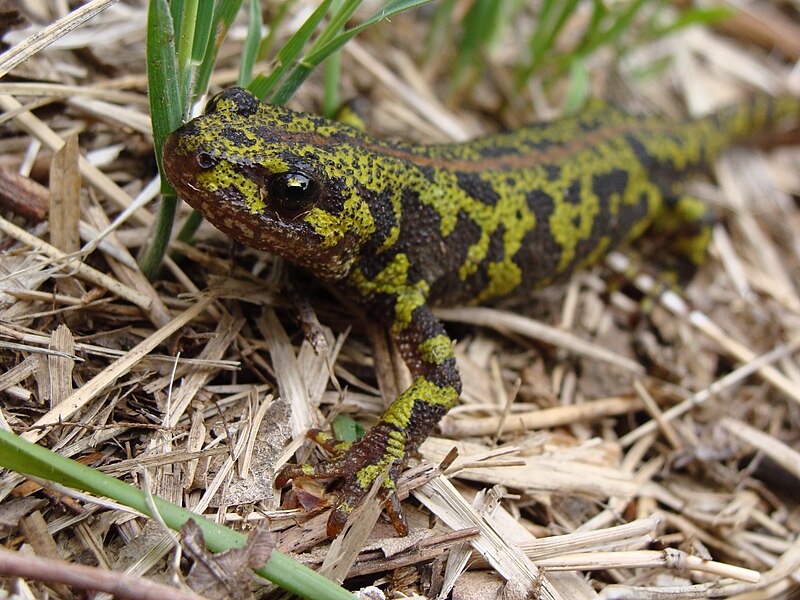
Basic Diet
Newt-feeding is simplified by the fact that nearly all species will take non-living foods…this is in sharp contrast to terrestrial salamanders, which generally consume live prey only. Read More »

Newt-feeding is simplified by the fact that nearly all species will take non-living foods…this is in sharp contrast to terrestrial salamanders, which generally consume live prey only. Read More »
As a herpetologist and New York City native, I’m thrilled by the prospect of finding wildlife, endangered or otherwise, within big cities. I was, therefore, very happy to read about the recent discovery of a population of critically endangered salamanders (Mexican Axolotls, Ambystoma mexicanum) in the heart of one of the world’s most densely populated cities. Read More »
Please see The Natural History of Axolotls and The Captive Care of Axolotls for further information on this fascinating captives. Today I’ll finish up with a note on reproduction.
Inducing Reproduction
 Adult axolotls are sexually dimorphic, with females being of a heavier build and having shorter and broader heads than males. The cloaca of the male is noticeably swollen during the breeding season, and gravid females become very plump.
Adult axolotls are sexually dimorphic, with females being of a heavier build and having shorter and broader heads than males. The cloaca of the male is noticeably swollen during the breeding season, and gravid females become very plump.
The natural change in day length and room temperature in temperate regions is often enough to stimulate reproduction. Animals under my care in NY respond to natural variations in room temperature (they are housed in a cool basement) and possibly day-length (light enters through a ground level window). Females generally lay from January through March, sometimes into April, at water temperatures of 55-60 F.
A sudden increase of water volume and a drop in water temperature seems to stimulate breeding even outside of the normal breeding season. Be careful, however, that females actually lay their eggs when artificial methods such as this are utilized. Retained eggs are a great concern among many captive amphibians, although I have not run into such with axolotls.
The Eggs
 Please see the Natural History of Axolotls for details on courtship and mating. Females have been observed to pick up several spermatophores during the night, although it is not clear all are from one or several males. Eggs are attached to water plants or any other substrate within the tank. Plastic plants make ideal deposition sites (from a pet-keepers point of view!) as they are easily removed from the aquarium.
Please see the Natural History of Axolotls for details on courtship and mating. Females have been observed to pick up several spermatophores during the night, although it is not clear all are from one or several males. Eggs are attached to water plants or any other substrate within the tank. Plastic plants make ideal deposition sites (from a pet-keepers point of view!) as they are easily removed from the aquarium.
Axolotls are ravenous consumers of their own eggs, and few will survive if the adults are left in the same tank. At temperatures of 55 to 60°F, the eggs will hatch within two to three weeks. I generally provide them with mild aeration, just enough to keep the eggs slightly moving. Eggs deposited on plants and on floating objects seem to have a higher hatch rate than do those laid along the bottom of the aquarium, so be sure to provide suitable sites for your females.
Caring for Axolotl Larvae
The larvae lie motionless for a day or so after hatching, after which they become veritable eating machines. They are best raised in a bare-bottomed plastic or glass aquarium. Mild aeration via the return from a corner or sponge filter should be provided. The young require daily feedings and very frequent water changes – after having raised 160 to adulthood at one point, I can vouch for this as being a labor-intensive but ultimately rewarding task.
I’ve found light plastic terrariums or sweater boxes that can be easily dumped and filled to be the method of choice when rearing large numbers of salamanders. I’ve also used plastic wading pools, but unless you can arrange a way to drain and re-fill easily, these can be a bit un-wieldy to work with. The extra room they provide does, however cut down on cannibalism. Please see Captive Care of the Mexican Axolotl (Physical Environment, Feeding) for tips on setting up enclosures and feeding axolotl larvae.
The IUCN’s recommended conservation strategy for this species, as well as historical and natural history information, is posted at: